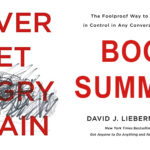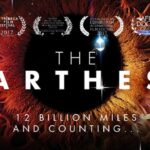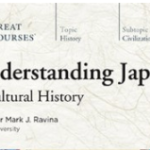The Crisis of Credit Visualised + Money & Life + The Story of Solutions
(Paras note: If you already know this please scroll down to watch the short video called The Story of Solutions)
The Crisis of Credit Visualized from Jonathan Jarvis on Vimeo.
Money and Life
Can we see the economic crisis not as a disaster, but as a tremendous opportunity?
Money & Life invites us to participate in the great transition to a sustainable, equitable and restorative economy that meets the needs and realities of the 21st century.
– Before money had pictures of gods and nature. Then it started getting Roman faces.
– Mutual giving was more prevalent until the industrial revolution. Societies grew and became a measure of wealth.
– People made their own entertainment at home.
Amazon #ads
– Bank look like temples. The bankers are made to look like high priests.
– Money doesn’t really have intrinsic value. It’s value is decided by people who agree to give it a certain amount of value. Salt and gold have value that you know is there.
– The story of fiat money how you give $10 to a bank and it loans $90 because it’s ‘created’ that money. So if you take a loan from the bank for 100,000 at 10% interest. At the end of the loan term you’d have owed 110,000. So where do you get that 10,000 extra? The bank had to created it elsewhere by giving out loans. The compounding is exponential which is where the whole world goes into debt. Think of it as musical chairs where someone has to miss that one chair and take the default.
– This risk is called the business cycle. In boom times debt accumulates exponentially. Someone has to default because of the rush for the limited money. This creates more defaults until there is a bust. Once the bad debts are cleared the economy moves up again. The system has booms and busts built into it.
– People were stressing out of being taken to court because of these issues but they realised that they’re just another name and statistic. Bankruptcies are happening more and more often.
– We’ve started measuring growth by how many ‘train-wrecks’ we can have to rebuild new ones.
– We’re living at a compound rate in a finite planet.
– The money system creates scarcity. Water is free but with money it’s scarce. There is not enough so people compete. People hoard. Accumulation is unhealthy because if the circulation stops the economy stops.
– 2/3 of the economy relies on consumerism. The person who depletes, takes, destroys or diminishes. We’re commodities to each other. You don’t live right, you don’t look right, you don’t have enough, you need this to be complete. You need stuff! Buy camping gear that you’ll not use in years.
– A persons real net worth has nothing to do with money but our default position is money.
– Rational market theory: The market regulates itself. People act rationally to maximise their self-interests. Prosperity is spread without government interference.
– Reganomics: Widespread tax cuts and deregulation of domestic markets AKA trickle down economics. Benefits given to the wealthy trickle down to the needy. But what happened was that the higher classes siphoned and sucked up wealth from the middle and lower classes.
– Big companies swallowed small independent businesses.
– Wall street grew so fast and so much it decoupled from planet Earth and turned into planet finance.
– Derivatives are not real, risks are not really covered, how was the money being made or invested. Lack of transparency and risk. It was like a giant Ponzi scheme.
– The people are starting towards a new life and story. A paradigm shift happens from you or me to you and me. Cooperation dominates. So many groups, organisations and movements are growing. (Paras note: Transition towns is one of them)
– Money has to decentralise. You don’t even need these banks that don’t look out for you.
– So many new systems of currency are being invented. Community currency, volunteering, LETS (local exchange trade systems), barter exchanges, etc.
– Pay it forward by buying something for the next person in line. (Paras note: Doing a good deed releases serotonin and the best part is even watching a good deed releases the same well-being and happiness chemical.)
The Story of Solutions
The Story of Solutions explores how we can move our economy in a more sustainable and just direction, starting with orienting ourselves toward a new goal.
In the current ‘Game of More’, we’re told to cheer a growing economy — more roads, more malls, more Stuff! — even though our health indicators are worsening, income inequality is growing and polar icecaps are melting.
But what if we changed the point of the game? What if the goal of our economy wasn’t more, but better — better health, better jobs and a better chance to survive on the planet?
Shouldn’t that be what winning means?






